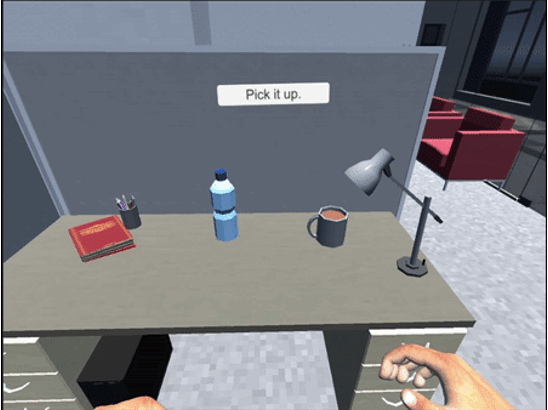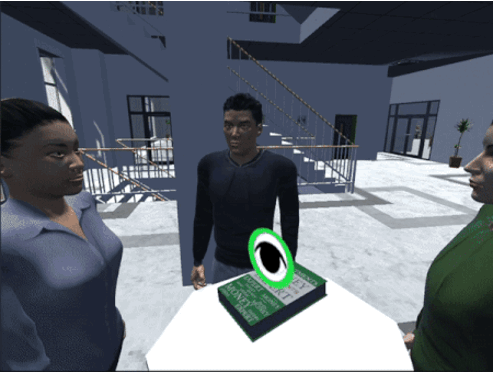
VR USER EXPERIENCE RESEARCH (View Article)
VR games and educational systems commonly employ interaction cues to provide information on how to take appropriate actions at particular moments, such as the Steam VR tutorial employing a virtual robot to inform users how to perform common VR interactions.
By representing interactions and their cues as textual descriptions, functional grammar methods can be applied to those textual descriptions to better understand the relationships between the interactions and their cues.



Flawed designs


Well-designed interaction cues are vital in games and apps as they guide users intuitively without disrupting immersion. These concise yet informative cues enhance navigation, reduce cognitive load, and keep users focused on tasks or gameplay. By delivering key information efficiently, they create a seamless experience that keeps users engaged and satisfied. Well-crafted cues also help improve system performance by streamlining interactions, reducing unnecessary processes, and optimizing user flow. Ultimately, they foster user confidence and loyalty, aiding in customer retention while ensuring the system runs smoothly and efficiently.
Identify the key elements of an effective interaction cue.
01
Traditional VR Experiment Flow
Human Processor Model
Norman’s Stage of Action Model

02
New UX Design
Based on the traditional flow, present interaction cues through online platforms such as Prolific and Amazon Mechanical Turk. Which can be used for remote VR studies and user research.

03
Functional Grammar
Analyze the interaction cue by identifying and mapping the functional grammar roles.
Design and develop interaction cues based on grammatical components to ensure they effectively convey the intended information.
A total of 40 participants (20 females, 20 males), recruited through the Prolific platform, participated in this study. The average age of all participants was 38.3 ± 15.2. The average age for female participants was 39.8 ± 15.0, and, for male participants, it was 36.8 ± 15.5.
I developed a VR scene with an office building and designed various basic interaction tasks, encompassing different subjects, predicators, objects, and modifiers. I implemented interaction cues with complete information, as well as four types of incomplete cues.
The study consisted of 60 visual cues, including 12 complete cues and 48 incomplete cues. The 48 incomplete cues encompassed all the types of incompleteness that was identified, which were subject incomplete, predicator incomplete, object incomplete, and modifier incomplete.
e.g. Presented a rotating look icon as a subject incomplete cue; and presented four responses for users to chose from: (pictures are screenshots taken from the virtual scene.)





Screenshots from the Study
For each trial, I first conduct a Chi-Square Goodness-of-Fit test to determine whether the distribution of responses is of equal proportions. If statistically significant, we then conduct separate Wilcoxon signed-rank tests on the different pairs of responses to determine which responses were significantly different from one another.
People have a tendency to select actions from the first person view when no complete cue is provided. However, with explicit complete cues, people are more likely to select the expected subject.
Results suggested that predicator complete cues have the ability to guide participants towards making the expected selections. With incompleteness of predicator, the participants displayed a tendency to select actions based on the specific object presented.
Particularly, target object and modifier of an action should be provided explicitly and concisely.






